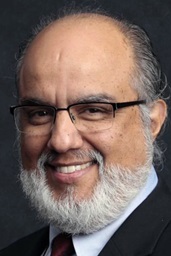October 30, 2012–As Hurricane Sandy bore down on millions of people, The United Methodist Church was already helping them prepare, respond, and cope with their fear.
From New England to the eastern seaboard, into the Midwest, storm evacuees were moving into shelters or hunkering down in their homes.
United Methodist Early Response Teams (ERT) from many states were put on alert, and will deploy only after emergency officials give the okay. “At this point we’re waiting out the storm,” said Carol Brozosky, an ERT leader from New Jersey, which has more than 150 ERT responders statewide.
Already, Brozosky has helped contact trained UM volunteers who are now serving in American Red Cross shelters helping thousands of evacuees.
United Methodist conferences also readied response trailers equipped with tools. Brozosky found herself wishing for another outfitted trailer or two. “Right now we have one trailer that’s fully outfitted, and the equipment we need costs upwards of $2,000,” she said.
Checking on Neighbors
Congregations nationwide were checking on their friends and family to ensure they could communicate via cell phone when power outages occurred. Many groups were using the “Connecting Neighbors” training developed by UMCOR to increase their readiness.
“We are making sure that our neighbors have taken precautions to ride out the storm,” said Claire Chichester from her home in Elizabeth, New Jersey. “For now, we wait to see the force of the storm, how she’s going to come in, with what kind of tide or winds.”
Chichester received training as a case manager through UMCOR and now works with the interfaith recovery committee, Somerset Area Disaster Response.
She urged people to remember to support long-term recovery long after Hurricane Sandy fades from the media. “Please, please help UMCOR over the long term,” she said. “Help people repair and replace and recover. We are not even finished with [Hurricane] Irene recovery. People need to know this will take a long time.”
It’s a tense time but people need to remember the church is there, said the Rev. Joseph Edwoodzie, disaster response coordinator for the New York Conference. “Everybody is just hoping and waiting,” he said. “We do feel that the support is incredible, not only emergency funding but with the connection we have as a church through UMCOR.”
UMCOR has issued $10,000 emergency grants to the New York Conference, New York Disaster Interfaith Services, and the Greater New Jersey Conference.
Second – or Third – Disaster for Many
For many people, Hurricane Sandy is capping off a string of disasters, whether it’s last year’s hurricane damage, spring tornado destruction, or wreckage from a summer straight-line windstorm.
In New York’s Catskill-Hudson area, the Rev. Dale Ashby, district disaster coordinator, said that people impacted by Hurricane Irene are especially vulnerable to being hit again.
But there is a positive flip side to experiencing more than one disaster, he added. “We’re getting to be experts, whether we want to or not. It does mean people know how to prepare and get stocked up on essentials. Because of Irene, we have trained a lot of ERT folks as well. We had a conference-wide meeting to talk about preparations.”
In eastern Pennsylvania, disaster response coordinator Debra DePrinzio said that she was tapping a network of volunteers who were currently staffing shelters and getting flood buckets ready for distribution.
Nationwide, UMCOR has 11,000 cleaning buckets and 150,000 health kits ready to deliver into the hands of people in Sandy’s path.
DePrinzio said volunteers are also meeting unique roles that have opened up as the storm worsens. “Some of the shelters needed Spanish interpreters,” she said. “I was able to put out the word through my entire Methodist network and, already, they are in place at the shelters.”
The Power of the Whole
As large as the monster Sandy is, the church is larger and more powerful in its preparations, its spirit and its capacity to be here for years to come, said Tom Hazelwood, UMCOR’s assistant general secretary for US Disaster Response. “It really is about our connection,” he said.
In the path of Sandy, the church was exhibiting the finest kind of synergy, he added. “That’s when two or more things working together create something larger than the whole.”
As Hazelwood sent out e-mails confirming emergency grants from UMCOR, he said he was tackling the practical aspects of disaster response even while reflecting on the spiritual power of prayer and the gift of the church. “We are more powerful because we are all joined together,” he said, “and never more than in times like this.”
The connectional UM church is alive, he concluded. “All of it fits together into this great, powerful ministry that is disaster response. It begins now and it will continue for years – until the last person is home.”
Please help now. Please help in years to come. Donate to Hurricanes 2012, UMCOR Advance #3021787. You can also text the word RESPONSE to 80888 to give an immediate $10 donation.
Like what you're reading? Support the ministry of UM News! Your support ensures the latest denominational news, dynamic stories and informative articles will continue to connect our global community. Make a tax-deductible donation at ResourceUMC.org/GiveUMCom.



